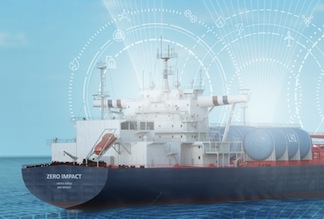The following is text of a news release from the American Bureau of Shipping (ABS):
(HOUSTON) — The International Maritime Organization (IMO) has set ambitious targets for the shipping industry. In addition to the 2020 global sulfur cap, shipowners and operators must consider the greenhouse gas (GHG) targets for 2030 and even more ambitious emissions goals for 2050.
Adapting to new regulations and requirements aimed at lowering the industry’s collective carbon footprint will require innovative solutions that address low and zero carbon fuels, new ship technologies and more efficient operations.
To help drive decarbonization strategies, ABS has published "Setting the Course to Low Carbon Shipping: Pathways to Sustainable Shipping," the second in a series of industry outlook documents — the first was published in June 2019 — to reference available carbon-reduction strategies and inform the shipping industry as it enters the uncharted waters of the 2030/2050 emissions challenge.
The newly released outlook defines three primary fuel pathways and offers key insights into: alternative power generation systems; the evolution of global trade and its effect on fleet size; fuel consumption and emissions; operational measures to optimize vessel usage and GHG emissions; and conceptual designs and specifications for vessels opting to use alternative fuels and power generation systems.
ABS offers this outlook as a tool to help shipowners and operators understand the complexity of the task ahead and to move forward effectively as they assess their options for a transition to low-carbon operations.
Key takeaways from the outlook include:
• Decarbonization of the global economy is likely to lead to profound changes in trade volumes and patterns in the full range of commodities transported by sea over the next 30 years. These changes will affect the evolution of the fleet and reduce certain vessel segments over the period to 2050.
• New safety regulations will be required to ensure the wide adoption of new technologies and operational frameworks that may not be covered by current standards.
• Based on the standard scenario for emissions from the projected fuel mix for the five vessel segments analyzed in this study, those sectors should be able to meet the IMO’s target of a 70 percent reduction in shipping’s carbon intensity by 2050, relative to 2008. However, for them to achieve a 50 percent reduction in absolute CO2 emissions (tons) by 2050, it will require the market share of petroleum fuels to be further reduced beyond the projections of the standard scenario, to below 40 percent of the fuel mix.
The Impact on the sustainability of the industry
Markets are a powerful incentive for innovation, and regulation is needed to establish common goals. When it comes to reducing GHG emissions for shipping, not only will supporting regulation potentially have an impact on ship designs, fuel selections and vessel operations, it may also affect the choice of cargoes that will be transported, as well as the trade routes and ship sizes.
In that light, the industry will need regulation that provides a compliance process that is technically proven, safe and commercially sustainable, one that encourages early adopters of new technologies.
Lowering the carbon footprint of an industry that moves almost 90% of global trade is a significant undertaking. Change on that scale will not come quickly, great efforts will be required to ensure that shipping’s positive contributions to global trade and the economy remain visible for all to see.
The report is available for download at ww2.eagle.org.

